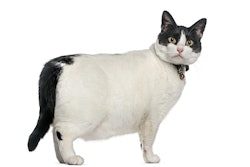
At the Association of American Feed Control Officials’ (AAFCO) mid-year meeting held in Anaheim, California, USA, a question was asked during the Pet Food Committee meeting on January 23, 2018. It was a seemingly straightforward question: Can we simply remove the word “edible” from the definition and claims for human grade pet foods, since all human foods are edible?
The question may appear to be simple to a layperson or consumer; however, the answer does decide who should or would have jurisdiction over the manufacturing of the pet foods versus jurisdiction over the claims: the US Department of Agriculture (USDA), Food and Drug Administration (FDA) or the state. Additionally, there still appears to be some confusion on how pet food companies can make human grade claims and what the implications are. As a result, the Pet Food Committee asked to pull together a Human Grade Claims Committee to further review implications and potential gaps.
AAFCO guidelines for human grade claims
In its Official Publication (2018), AAFCO clearly outlines the guidelines for pet food companies wanting to make human grade claims. The guidelines are broken down into four parts on pages 151 to 152. For purposes of this blog, I will abbreviate these parts:
- The use of the term “human grade” is only acceptable to the product as a whole. Every ingredient and finished food must be stored, handled, processed and transported in a manner that is consistent with current good manufacturing processes (cGMPs).
- The definition “human grade” is false and misleading if the finished good as a whole is not human edible. Human grade claims cannot be made on individual ingredients if the finished good is not human grade.
- For substantiation of human grade claims, a manufacturer must have documentation for the following:
a. That each ingredient is fit for human consumption
b. Every ingredient and finished food is stored, handled, processed and transported in a manner consistent and compliant with cGMPs for human edible foods in 21 CFR part 117.
c. The manufacturing facility is licensed to produce human food by the appropriate authority (local, county or state public health authorities).
4. A pet food with human grade claims must be labeled for its intended use (e.g., dog food).
Human grade in consumer terms
When the consumer purchases a pet food touting human grade claims, they may not be thinking in specifics that the AAFCO guidelines have set forth or 21 CFR part 117 outlines. With that being said, they do have reasonable expectations that all ingredients are human grade, they are handled in a manner that complies with human food safety standards and they are made in a facility that is licensed for human food production.
Requirements for human food production
Within human food production, there are two major routes of manufacturing or producing a food. In a large manufacturing facility, USDA Food Safety and Inspection Service (FSIS) personnel are on site during production to ensure the standards are being met. Imagine a person with a checklist ensuring proper handling, processing, cooking, packaging and storage. The second type of production facility would be a restaurant or open-kitchen type of setting. In this case, USDA FSIS personnel are not on site; however, public health authorities generally have jurisdiction and will do both announced and unannounced audits.
Yet although the regulatory authorities are very different between human food and pet food, the food safety and quality concerns are still the same.
Are all human grade pet foods actually human grade?
On January 17, 2018, Tim Wall broke the story that Just Food for Dogs recalled three dog foods for Listeria. If you visit the Just Food for Dogs website, it proudly states, “… that 100 percent of the ingredients in our Beef & Potato Recipe are approved for human consumption.” Additionally, “All of our healthy food for dogs is made by hand in small batches in our Southern California kitchens.” Even in its FDA recall letter, the company states, “JFFD uses 100 percent USDA and other restaurant-grade ingredients in all of its pet food.” All of these claims seem to fit the AAFCO guidelines for human grade claims, correct? Not exactly.
Not in California!
When most people in the pet food industry think of California, they see the state as an entry point into the pet food market given its entrepreneurial mindset. However, that’s not the case with human grade pet food. After a discussion with the Orange County Public Health Care Agency, I was informed that the agency does not enforce human quality and food safety standards because Just Food for Dogs’ “kitchens” are still considered a pet food manufacturing facility (because they make dog food) and do not fall under the State Law of the California Human Food Safety Act (only covers human foods).
As a result, human grade pet food companies must register with the California Department of Public Health (CDPH) as a company that processes pet food under California Health and Safety Code Section 113060. CDPH did inform me that Just Food for Dogs is currently licensed by CDPH as a pet food facility (not human). However, the agency needed to check if all the kitchens and pantries were registered in the state. The California Department of Food and Agriculture has been notified about the issue and stated that they intend to update their pet food regulations in the next year or so. Obviously, this doesn’t help the consumer who thinks they are buying human grade food for their dog.
Are human grade pet foods really human grade?
Now back to my original question: Are human grade pet foods really human grade? In the case of foods produced in California, the answer is simply no. Since companies producing this type of product have to be licensed as pet food facilities, they do not meet the guidelines set forth by AAFCO as they stand today. Remember, human grade pet foods must be manufactured or cooked in facilities that are licensed to produce human food (see 3c above).
Technically, such claims would be considered false and misleading in all states because they are a pet food manufacturing facility (not human grade). Although the state of California could use enforcement discretion, other states cannot because the company does offer shipping to all other states.
In summary: Relying on trust and transparency
As AAFCO tries to navigate the waters for human grade claims, we must rely on the trust and transparency of the companies selling the food. Unfortunately, based on current laws and regulations in the state of California, there is no such thing as human grade pet food. Therefore, consumers should question and do their homework when purchasing products made in this state until the companies meet the required standards (open-kitchen or not). As for other states, I do know they can register and license their human grade pet food facilities as human grade — thus following the guidelines set forth by AAFCO. Buyer beware!
Next topic: Do AAFCO feeding trials matter?
Next time we will discuss, “Do AAFCO feeding trials matter?” If there are topics you would like to have discussed, feel free to comment below or reach out via LinkedIn: www.linkedin.com/in/ryanyamka.
Resources
Association of American Feed Control Officials. 2018 Official Publication
CFR - Code of Federal Regulations Title 21
California Health and Safety Code Section 113060
California Health and Safety Code Section 113025
California Human Food Safety Act

















